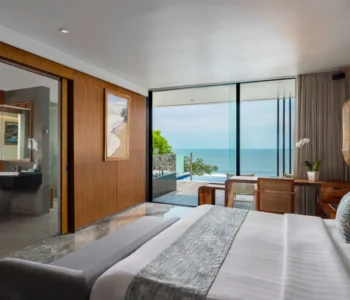The Balinese revere water. Go to any holy place and you will find water present. Rushing rivers of pure, clear water, small trickling streams, holy springs or water spouts with water issuing forth from some sacred place deep within the earth are always present. In some places, water passes through ancient channels cut deep into solid volcanic rock maybe a millennium ago. Flowery offerings decorate each holy place across the island, water sources and remote springs are not forgotten, just as streets and doorsteps of every house have them placed outside.
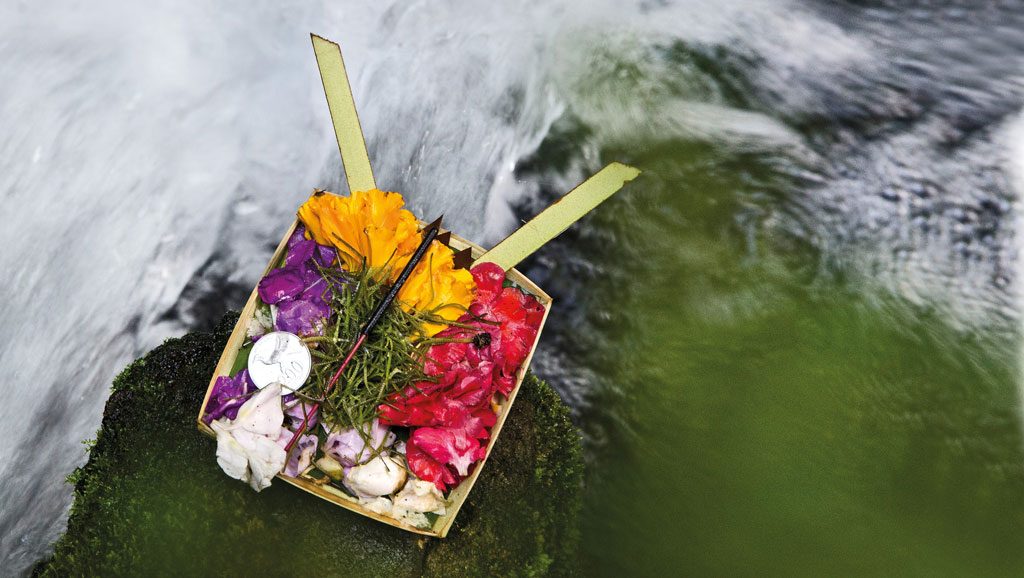
According to Fred Eiseman Jr, (Bali Sekala and Niskala) “holy water is an agent of the power of a god, a power of mysterious force. It can cleanse spiritual impurities, fend off evil forces, and render the recipient immune to the attacks of negative or demonic forces.” It strengthens and purifies everything it touches.
Every ceremony, even daily household rituals, requires holy water. The water may come from a holy spring or it may be water that has been blessed by a holy priest (pedanda) or lay priest (pemangku). Water has powerful mantras recited over it and as anyone who has any knowledge of new age wisdom, will know that water has memory, even as it changes from a liquid to a gas or to a solid state. So the holy messages of the mantras remain in the water. It is the connecting medium to the gods and also the medium to cleanse the body, mind and spirit.
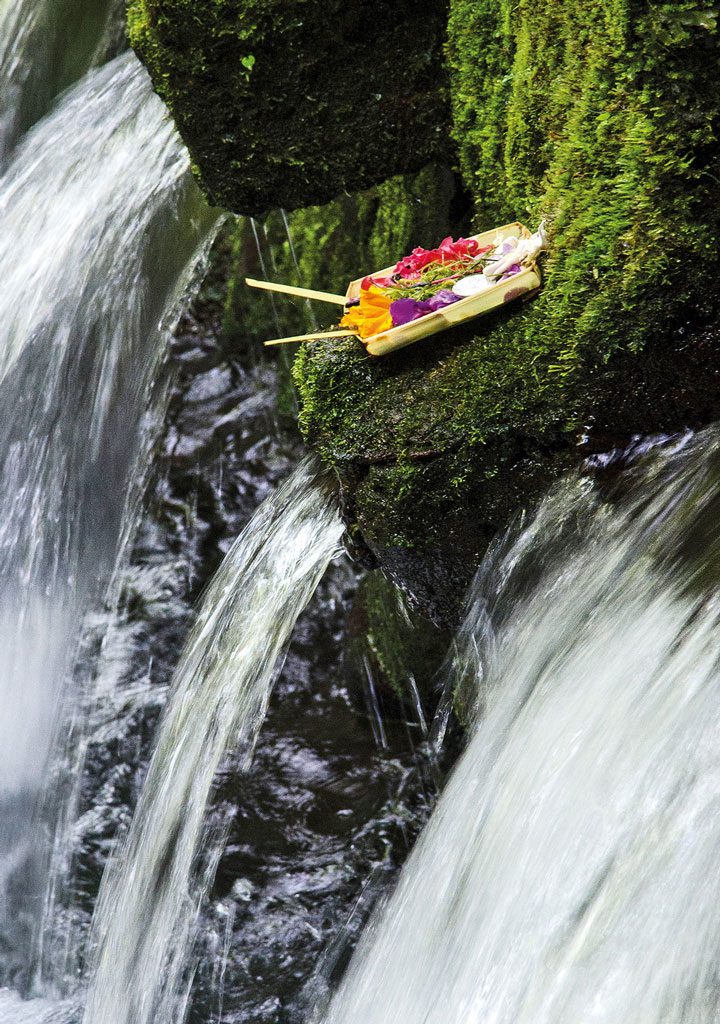
Water has many names in Bali. Normal water in lower Balinese is Yeh, while Medium Balinese calls water Toya, while in High Balinese it is called Tirtha.
Beyond the simple form of purification that comes with a prayer ceremony, there is also the more complex melukat – a more thorough kind of cleansing where the faithful are immersed in water, rather like the Hindus who flock to the holy Ganges in India who dip three times beneath the waters to purify their spirit.
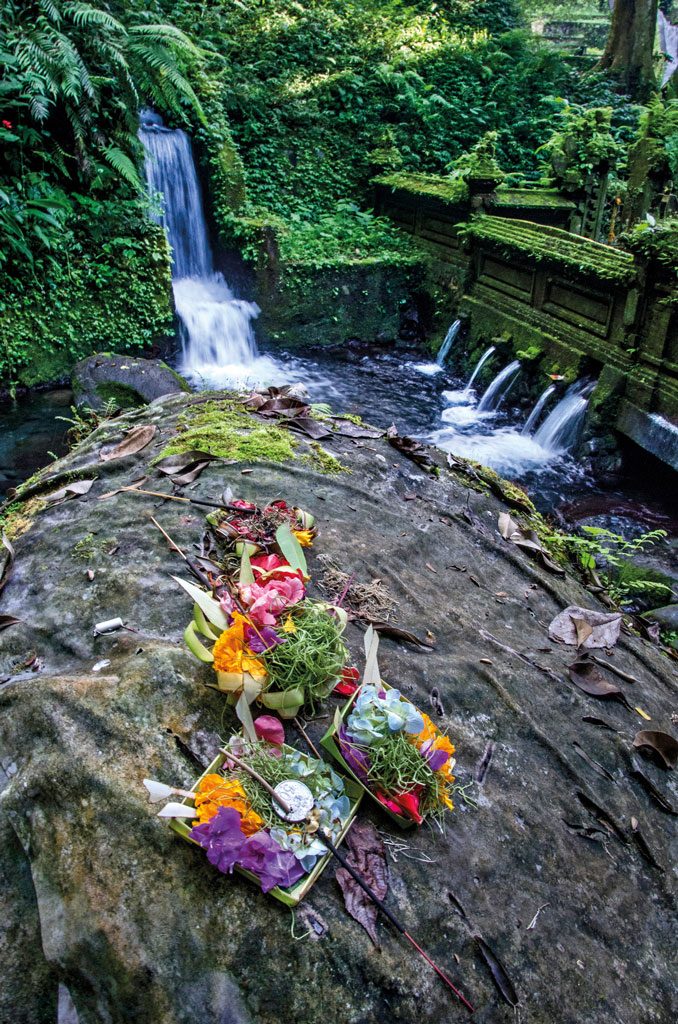
It is an intrinsic part of the ceremony and is given to each hand three times then it is splashed on the faithful after prayer. Visitors can enjoy some of the beautiful water temple that are scattered around the island. One of the most beguiling complexes is Tirtha Empul (big spring) at Tampaksiring which see hordes of visitors every day. On holy days, it is extremely crowded so best to visit on an ordinary day. It will still be extraordinary.
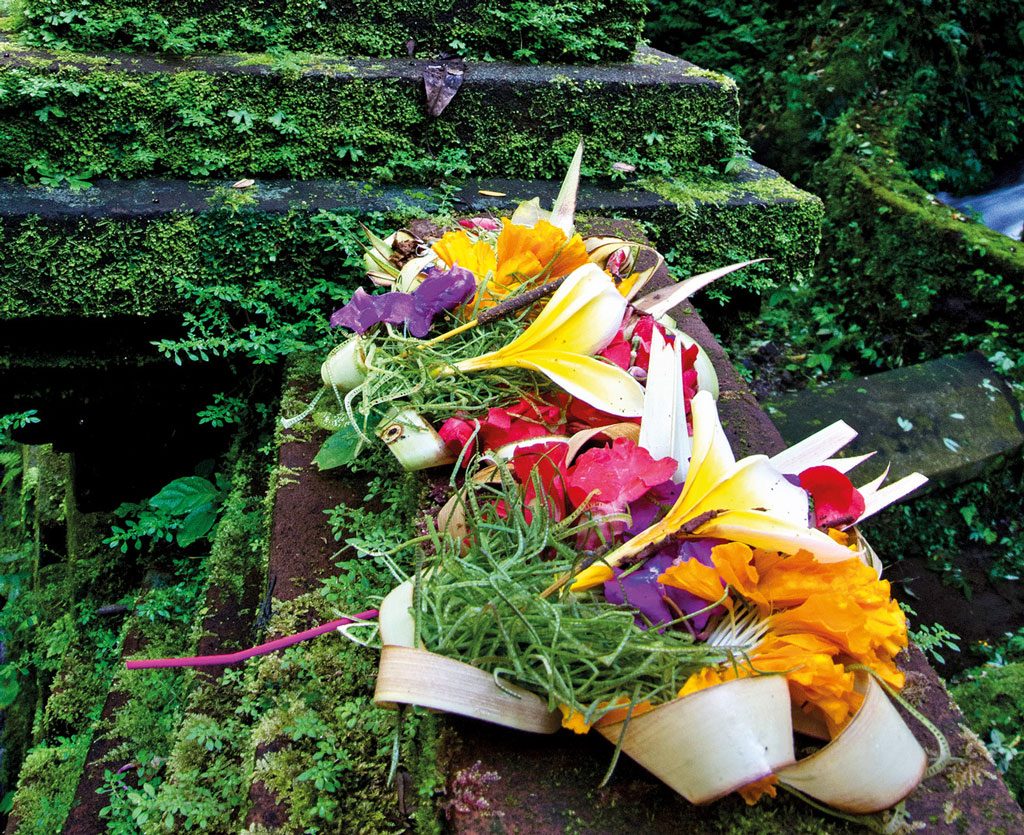
But now Bali is under threat as the island’s watersheds are drying and the water table is lowering. Too many hotels, too many swimming pools and even too many long hot showers for the tourists mean big trouble ahead. Rice fields suffer as water is diverted to cater to the booming tourist industry. What will happen is difficult to say but for now Tirtha Agama lives on as the holy water runs down sacred river courses from the holy mountain of Mt Agung and Bali’s very important Lake Batur. We can hope that solutions are coming soon


